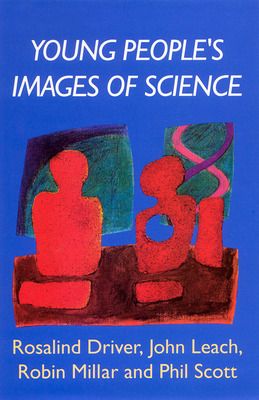Young People's Images of Science
1st Edition
0335231446
·
9780335231447
© 1996 | Published: January 16, 1996
* What ideas about science do school students form as a result of their experiences in and out of school?* How might science teaching in schools develop a more scientifically-literate society?* How do school students understand disputes about scien…
Read More
Request More Info
After you purchase your eBook, you will need to download VitalSource Bookshelf, a free app or desktop version here. Then login or create an account and enter the code from your order confirmation email to access your eBook.
- Access the eBook anytime, anywhere: online or offline
- Create notes, flashcards and make annotations while you study
- Full searchable content: quickly find the answers you are looking for
Introduction
Why does understanding the nature of science matter?
What is the nature of science
What do we already know about young people's ideas about the nature of science
Investigating young people's ideas about the nature of science
Young people's ideas about the purposes of science
Young people's ideas about the nature and status of scientific knowledge
A framework for characterizing features of young people's epistemological reasoning
Young people's appreciation of the social context of science
Educational implications of young people's images of science
Index
Why does understanding the nature of science matter?
What is the nature of science
What do we already know about young people's ideas about the nature of science
Investigating young people's ideas about the nature of science
Young people's ideas about the purposes of science
Young people's ideas about the nature and status of scientific knowledge
A framework for characterizing features of young people's epistemological reasoning
Young people's appreciation of the social context of science
Educational implications of young people's images of science
Index
* What ideas about science do school students form as a result of their experiences in and out of school?
* How might science teaching in schools develop a more scientifically-literate society?
* How do school students understand disputes about scientific issues including those which have social significance, such as the irradiation of food?
There have been calls in the UK and elsewhere for a greater public understanding of science underpinned by, amongst other things, school science education. However, the relationship between school science, scientific literacy and the public understanding of science remains controversial.
In this book, the authors argue that an understanding of science goes beyond learning the facts, laws and theories of science and that it involves understanding the nature of scientific knowledge itself and the relationships between science and society. Results of a major study into the understanding of these issues by school students aged 9 to 16 are described. These results suggest that the success of the school science curriculum in promoting this kind of understanding is at best limited.
The book concludes by discussing ways in which the school science curriculum could be adapted to better equip students as future citizens in our modern scientific and technological society. It will be particularly relevant to science teachers, advisers and inspectors, teacher educators and curriculum planners.
* How might science teaching in schools develop a more scientifically-literate society?
* How do school students understand disputes about scientific issues including those which have social significance, such as the irradiation of food?
There have been calls in the UK and elsewhere for a greater public understanding of science underpinned by, amongst other things, school science education. However, the relationship between school science, scientific literacy and the public understanding of science remains controversial.
In this book, the authors argue that an understanding of science goes beyond learning the facts, laws and theories of science and that it involves understanding the nature of scientific knowledge itself and the relationships between science and society. Results of a major study into the understanding of these issues by school students aged 9 to 16 are described. These results suggest that the success of the school science curriculum in promoting this kind of understanding is at best limited.
The book concludes by discussing ways in which the school science curriculum could be adapted to better equip students as future citizens in our modern scientific and technological society. It will be particularly relevant to science teachers, advisers and inspectors, teacher educators and curriculum planners.

